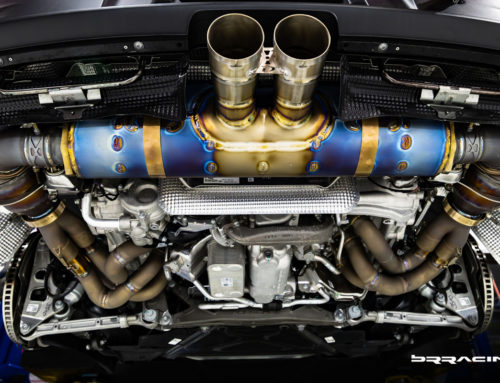In the midst of all the press flood that surrounds the new McLaren MPC-14, there is another technical marvel and breakthrough.
It is relative to the suspension technology used on the new car. Now, while McLaren is a technical genius, which is on display again in the new car, this breakthrough is NOT from McLaren, but instead from a combination of Tenneco (which is the parent to Monroe shocks), and Ohlins. This new suspension technology could do away with traditional shocks, and sway bars. Plus, give almost unlimited suspension adjustments and refinements. You could go from a suspension that could handle rock crawling, to a suspension that can do well on a Porsche Cup Car…..all without any changes.
This new suspension technology is called Tenneco Kinetic Suspension System (TKSS). This was first demonstrated on the Citroen World Rally car, that won the 2008 World Championship. It so revolutionizes suspension technology, that the FIA banned the technology from use in any of its supported race series. It has also now appeared on the Toyota Land Cruiser with great success. This system is now deployed on the new McLaren. Here is a description of the system and how it works.
What looks like a normal shock absorber at each corner is instead a hydraulic cylinder. As the wheel moves thru its suspension geometry, instead of the fluid in the shock passing through valves or orifices, the fluid moves into and out of holes above and below the piston and into a chamber. For each corner, each of the chambers is connected throughout the car to two accumalators, each of which contains fluid and nitrogen separated by a bladder.
This is similar in one corner to a remote resv system on high end race shocks (like AST or Moton or JRZ), but in the current implementation, they are not connected together.
The flow is restricted at each cylinder by an electronic controller, and therefore, determines the amount of damping provided.
The pressurized nitrogen contained within the two accumalators act as a spring to resist roll motion (think how a sway bar acts today, and how action and suspension movement on one side is responded to be movement or the restriction of movement on the other side, and instead of using the sway bar to accomplish this, the fluid flow on each side can accomplish this….however desired. Each wheel still has a coil spring, so nothing is changed there to affect the suspension geometry movement on each corner.
So, what type of ride do you want? A soft, easy going ride…then you can have it. The base system is soft, so bumps and other rough roads feel just fine. A high accumulator spring rate assures minimal body roll, which can be further dimished by adding more fluid to each accumulator. This option can be set by the driver. The system is simple, easy to design and build, but adds huge tuning options. Body roll can be so controlled that the wheels can be kept at the right angle to the road, and road grip is maximized.
One ride in the new McLaren, and as the saying goes, proof is in the pudding. The car is amazing.
Look for this suspension technology to come on most cars in the future.






Leave A Comment
You must be logged in to post a comment.